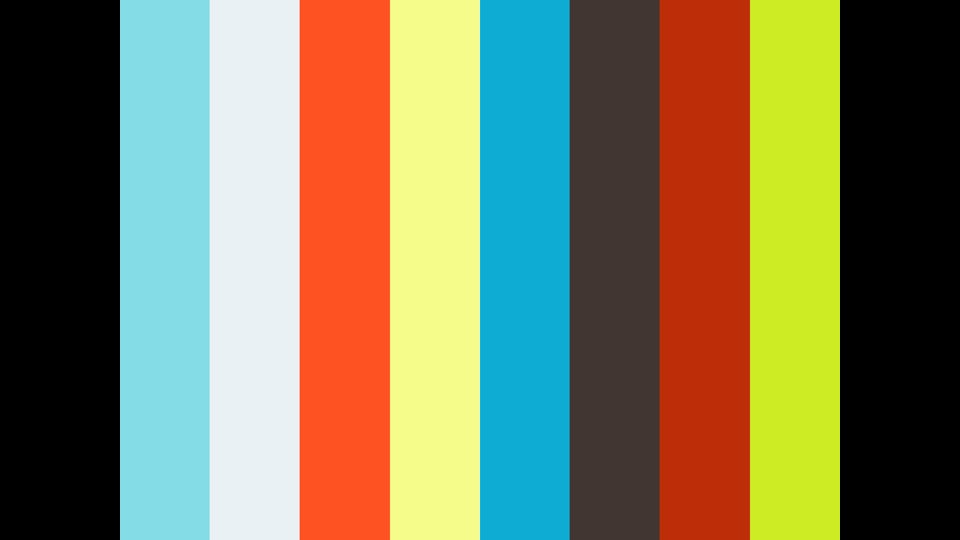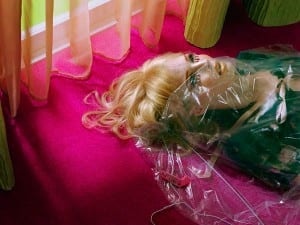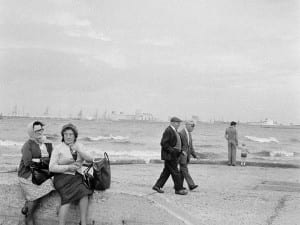Text by Paul Hardman
The Jerwood Drawing Prize has run since 1994, and is currently exhibited in the Jerwood Space in London, after it will tour nationally to venues including Bay Art Gallery, Cardiff and the Burton Art Gallery & Museum, Bideford and will then tour to other locations across the country. The entrants must have been pleased to know who was on the panel this year, particularly Rachel Whiteread who recently had an exhibition of her own drawings at Tate Britain, and must then have spent considerable time contemplating the practice of drawing. The directors of White Cube and Whitechapel made up the other two judging positions, as the heads of two institutions at the forefront of contemporary art, these also would be expected to make bold and insightful choices.
The gallery itself is ideal for an exhibition of drawing, not too large, lit with plenty of natural light, and the ever improving prize seems to guarantee excellent work. Due to the huge number of entries to the competition (3,354 entries from 1,779 artists, the most ever) the judges have had a significant challenge to select the winners and the work to be included in the exhibition. They are faced with the problem of quantity, but also the slippery issue of how to gage excellence in drawing, a fundamental practice within the arts. Almost all artists must draw, if only to sketch ideas or as the finished work. Everyone has at some stage put their pencil to paper to explain or work out an idea, to make a small map, or even to doodle a pattern or a face. Drawing is something common to us all.
Drawing as a category however, is a field with fairly blurred edges. For example, an ink drawing is a drawing, but what if the ink is in several colours and a brush is used, does this become painting, and therefore leave the category? If drawing is mark-making, then does the act of making the mark take precedence over the result, so that the act could be recorded and the mark disassociated? Is a film of a drawing still a drawing? And so on.
The judges then must decide on certain criteria to judge by, and faced with such choice they must realise that by their choices they define and redefine what drawing is, and which qualities constitute excellence. This year the judges have taken, to their credit, a variety of standpoints, and the selected work sets out a variety of different propositions for drawing. Perhaps the actual winners reflect a fairly conventional idea of ‘good drawing’, but the exhibition as a whole contains many curious and unusual items, combining to create a satisfyingly eclectic whole.
The simplest quality by which to judge a drawing to be outstanding is of course the technical skill needed to produce it, therefore it is no surprise that the winning entry, Gary Lawrence’s Homage to Anonymous is both large, 115 by 175 cm, and incredibly detailed. Speaking about this year’s winning piece, Paul Thomas, Jerwood Drawing Prize Co-Founder and coordinator of the selection process, said: “This drawing is an imaginative take on the tradition of topographical drawings, often made by unknown artists, and here rendered in ball point pen on the back of old discarded posters. It was a delight to see such a seamless fusion of the real with the imagined. The ordinary with the extraordinary; to share a quiet daydreaming that reveals a sense of place beyond mere recording. The subject matter is the harbour and town of Pothea, with the comings and goings of daily life but caught here in a muse of meticulous narrative details. This drawing transcends anonymity and ordinariness with intimacy, sensitivity, particularity and invention. There are many delightful thought provoking and exciting drawings in the exhibition, but Gary’s moment, in Pothea, in his studio, in his head, is certainly a highlight of this years show.”
The Cut by Jessie Brennan wins second prize and is again a technical achievement, detailed pencil drawings connecting across 12 sheets, a total of five metres long. This piece is one of the most commanding in the space as it is laid out in a long cabinet in the centre of the first room. The long image that she has created has the form of a street but is made up of household objects, strung out in a line and inhabited by tiny characters. Her drawing contains an element of the fantastical which is also present in Lawrence’s piece, but perhaps more-so. In fact it is the culmination of a project about the social history of the Lea River Navigation Canal, but it brings to mind something more whimsical, like the games of children, constructing worlds out of upturned books and furniture.
The exhibition contains several pieces that are much lighter, which provide a welcome contrast to the more overwrought work. One video for example feature two people lying opposite each other on a large sheet of paper, each of them scribbles rapidly on the page filling the space that is made between their two bodies, there is humour in watching this performance, but the video also says something about the directness and joyfulness of drawing.
Humour is apparent elsewhere in different forms; Brendon Lyons submitted a frame with only small pieces of paper left attached to staples after it had been ripped out. In a similar spirit Amikam Toren’s piece is the card back of a spiral bound notebook, the wire spiralling upwards where the rest of the pages had been torn off. The wire makes a lyrical line against the background of the frame; this is the raw act of mark-making.
Another trait shared by several intense works is a feeling of the uncanny, such as a suggestive image of a form under a white blanket against a dark background by Liam Allan, and the solid Magritte like volumes of curtain in Fran Richardson’s charcoal Drawing Room. Others found constructive ways of expanding on the format of the sheet of paper. Pattern of Faerie Tales by Iain Andrews is a set of fantastical images of bloated fish and blobby flora, but these were drawn on 11 loose sheets in such away that they would all fit together in any order to make any one of 990 continuous images.
Some of the work that dealt with purely abstract forms stood out particularly well, again exhibiting great skill, particularly Arthur Roberts Summer 2011 (Euclidean), depicting tessellating triangles drawn on wood has a particular presence. Soft Geometry by Ruby Manson, in which each tiny square on a sheet of graph paper was filled with a tiny dot of ink created a pleasingly rippling effect and showed great concentration and economy of means.
Clara Drummond exhibited great drafting skills with her half cathedral, half ship. Bonsai by Liz Bailey was an example of straight forward and impressively observed drawing at a large scale. Other work dealt more with surface, layering types of marks. I could go on, but it would be pointless to describe everything. The exhibition contains much wonderful work. If I had any kind of disappointment it would be that there was not much in the way of confident free mark-making, there could have been less tight and careful work and more vigorous looking image making. But this is only a small gripe; anyone visiting this exhibition will be more than satisfied.
The Jerwood Drawing Prize continues at Jerwood Space, London, until 30 October.
Monday 17 October 6-8pm
Jerwood Drawing Prize: In Conversation – Iwona Blazwick OBE & Deanna Petherbridge CBE
Director of the Whitechapel Gallery, Iwona Blazwick, and artist, writer and curator Deanna Petherbridge, discuss ‘The Primacy of Drawing….in a time of unprecedented freedom and experimentation’.
Events are free but must be booked in advance. Please see the Jerwood Visual Arts website for further details.
Aesthetica Magazine
We hope you enjoy reading the Aesthetica Blog, if you want to explore more of the best in contemporary arts and culture you should read us in print too. You can buy it today by calling +44(0)1904 479 168. Even better, subscribe to Aesthetica and save 20%. Go on, enjoy!
Image:
Sophia Crilly Harald Szeemann (From Ausstellungsmacher / A History of Exhibitions & Spaces series) Pencil on paper (2011)
Courtesy the artist





